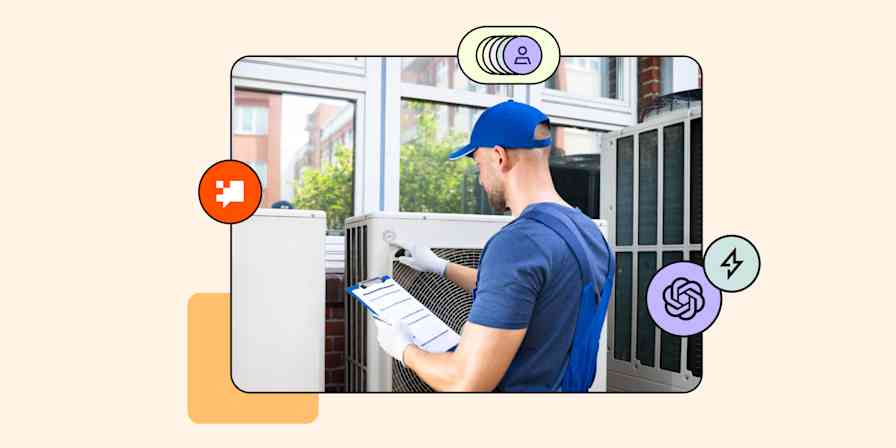How much time do you spend scheduling meetings or appointments? How many back and forth emails, coordinating your schedule with one or more people? Maybe you're one of the lucky ones and have an assistant that helps manage your schedule. But for everyone else, there's Amy Ingram.
Amy knows your schedule and she emails back and forth with clients, colleagues, and anyone else you're scheduling anything with. Amy might even be smarter than mere mortals like you and me: She's an artificial intelligence or AI, created by the team at x.ai.
Once you sign up with x.ai, cc: Amy (or her twin brother, Andrew—it's your choice!) in an email and she'll work with your emailee to find the best time and location. When they confirm the time that works for you both, Amy adds the appointment to your calendar and sends an invite to your guest. Amy can even check your calendar for more availability if your guest suggests totally different dates and times.

As Amy learns how to better manage schedules, x.ai strives to learn more about the people using their AI, so they can better enhance their service and help their customers save time.
Recruit Customers for User Research with Typeform
"Recruiting participants for user research takes a lot of time," Raquel Ledezma-Haight, Associate Product Manager at x.ai says. First, x.ai would send out an email blast with a Google Form attached. Once responses came in, the team sifted through the responses to find the people who met specific criteria. Once they had identified users, x.ai reached out to the participants to set a time for an interview or observation, which Amy helped with. It was that middle step—digging through the responses—that cost x.ai staff essential time.
Raquel explains how she found their solution to manual work: "I was Googling solutions to automatically trigger emails from Typeform submissions and [app automation tool] Zapier was one of the first results that appeared."
From that Google search, Raquel revised their recruiting practice: First, she switched over to Typeform, which let x.ai brand the questionnaire. They still send out a big email blast but now, when responses come in, the search for qualified users is automated.

Raquel built a Zap—a bridge between two or more apps—to search for a specific answer to one question. If the customer answered in the affirmative, an email through Gmail sends to the customer automatically, with Amy CCed to set up the interview.
These integrations have drastically reduced the time it takes to run a user research study here at x.ai. With this extra time, we're able to run more studies than ever before.
Raquel Ledezma-Haight, Associate Product Manager, x.ai
If you or your business send out forms and need to filter those results before sending a follow-up email, Raquel's workflow will simplify that entire process. You can also send a "thanks for participating" email after each new response—without filtering results—automatically with Typeform and Gmail:
Get email notifications or send follow-ups to new Typeform respondents
Send emails via Gmail for new, specified Typeform responses
"This new solution allows us to remove most of the previous steps of user research recruiting," Raquel says. "Now, we send an email blast to customers with a link to the typeform, and within minutes we start to see meeting invites appear in the User Research inbox."
Send Slack Notifications for New Meetings
Since Amy handles all the appointments now, Raquel needed to find a way to keep the x.ai team in the loop about how many interviews were scheduled and who they're with. Once again, she turned to Zapier and crafted another Zap.
When Zapier automatically sends an email to filtered participants, a separate Zap triggers, sending a notification to Slack that a scheduling email was sent and who it went out to. You can notify your team in Slack about emails sent from a specific inbox with Raquel's Zap:
Send Slack notifications for new Gmail threads [Business Gmail Accounts Only]
"[This Zap] helps us monitor how many people we've scheduled so we know when to shut off our typeform to new entries," Raquel says, keeping the team from being inundated by appointments.
Combining the artificial intelligence of Amy with the automatic actions of Zapier means the x.ai team spends less time on repetitive, manual tasks and more time building new features and running studies. "These studies inform our team on where we should focus our efforts, which in the end help us deliver a better product to our customers," Raquel says.
Raquel has advice for anyone ready to try Zapier, too: "Take the time to explore! Even if you go into the service with just one Zap in mind, there's so much to be done on Zapier and so many levels of customization."
All images courtesy of x.ai.
What's your story? Tell us how you use Zapier to do more. You can also read even more customer stories and find new ways to improve your workflow and productivity.





